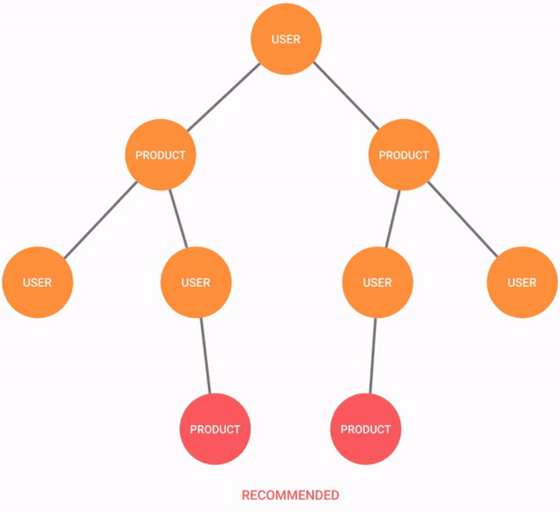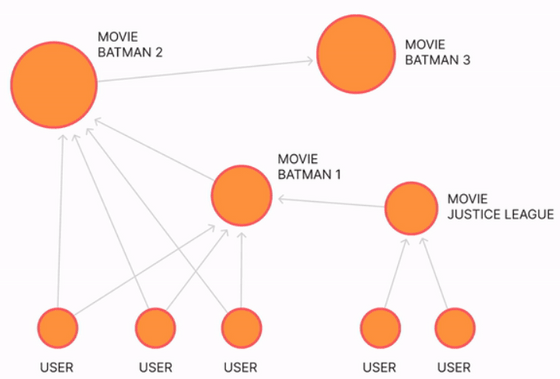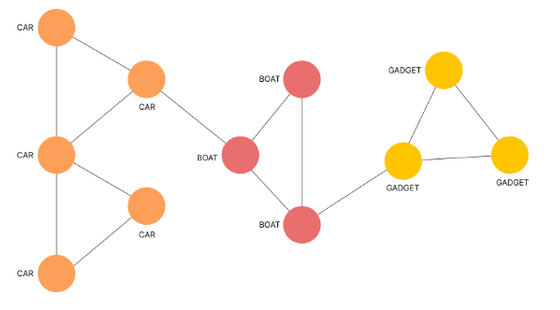Five algorithms indispensable for 'recommendation' that recommends things of interest

From recommended products displayed while shopping on e-commerce sites to related videos automatically played on video sites, modern Internet users are exposed to '
Five Recommendation Algorithms No Recommendation Engine Is Whole Without
https://memgraph.com/blog/five-recommendation-algorithms-no-recommendation-engine-is-whole-without
◆1: Breadth-first search
Breadth-first search (BFS) is an algorithm used for searching trees and graphs. The mechanism is simple. After selecting a starting node, all the nodes connected to it are searched, and the found node is used as the starting point for further searching, and relationships are found in this order.

In the field of recommendation, first, with a user as the starting node, we search for all the products that the user bought, Find another item you purchased. It then narrows down the recommended products by excluding those that are not relevant to the target user.
◆ 2: Page rank
PageRank is an algorithm used to find items that target users are likely to be interested in from the best and trending products for target users. This algorithm calculates the page rank (PR) value by counting how many nodes each node points to and determines the importance of that node.
Recommendations are used to discover trending products and find influential users. This is based on the idea that products bought by influential users are often of interest to other users.

◆3: Community detection algorithm
This is an algorithm used to identify and group users with similar behavior based on their behavior. If you can find a group of users with similar habits, you can refine your product recommendations based on the group they belong to and how that group behaves.

◆ 4: Link prediction
Link prediction uses an algorithm called `` graph neural network (GNN) '' to predict the connection between nodes such as products and users. In normal neural networks, connections between nodes are considered only as node features, but GNN, which treats nodes and lines connecting them as a set of graphs, considers various features about users and products. You can analyze relevance.
◆ 5: Dynamic algorithm
Recommendation system data is constantly being added, removed, and updated. For example, when the season shifts to winter and summer clothing loses interest, or when a popular product suffers a major accident and loses interest.
Regular algorithms have to start over when the data changes, which is time consuming and expensive. A 'dynamic graph algorithm' that computes graph properties from previous values eliminates the need to recompute the entire dataset. Similarly, the page rank and community detection algorithms mentioned above also have “dynamic versions” that respond to data changes, and make recommendations while responding to constantly changing data.
Related Posts:
in Note, Posted by log1l_ks







